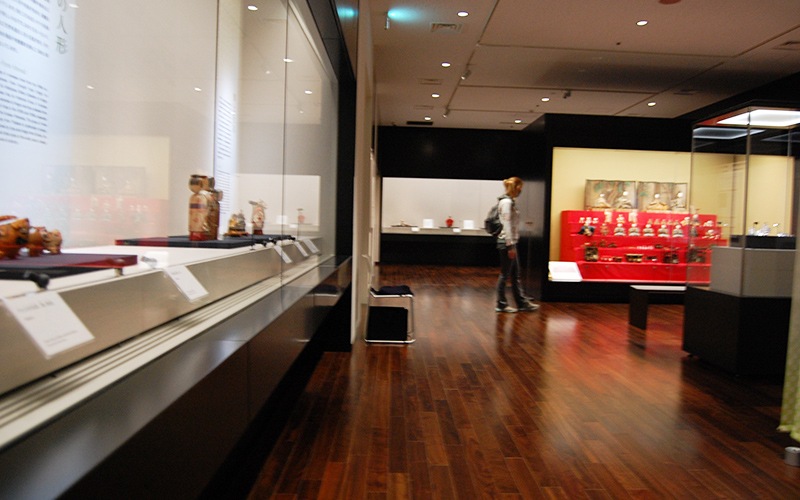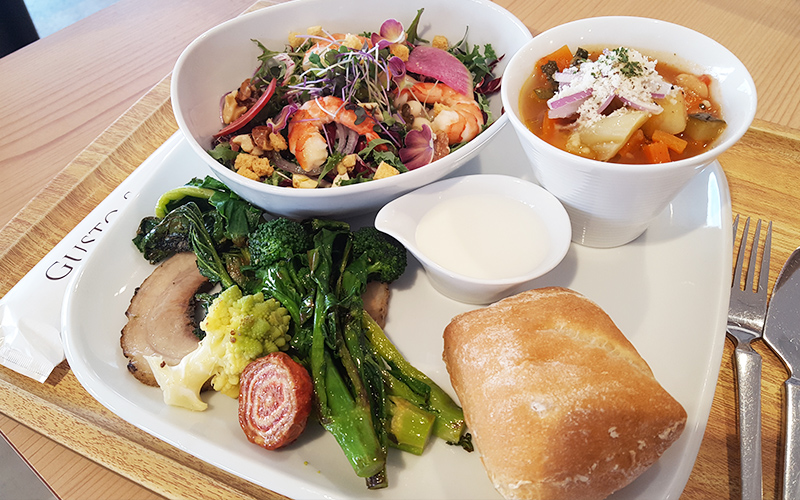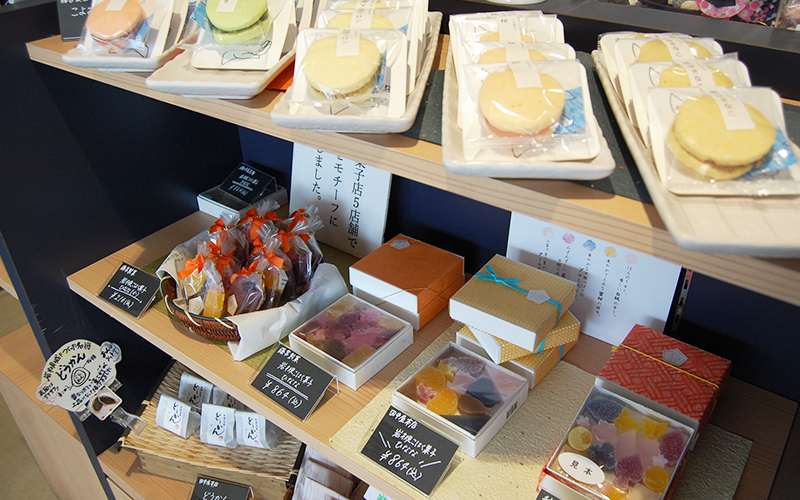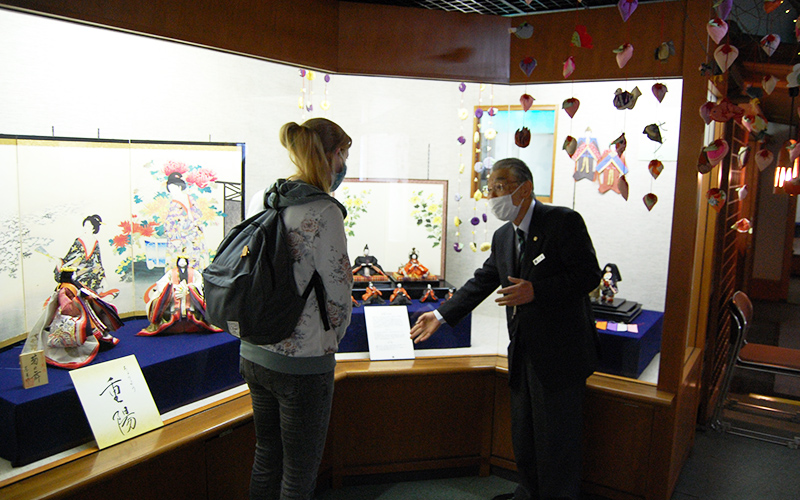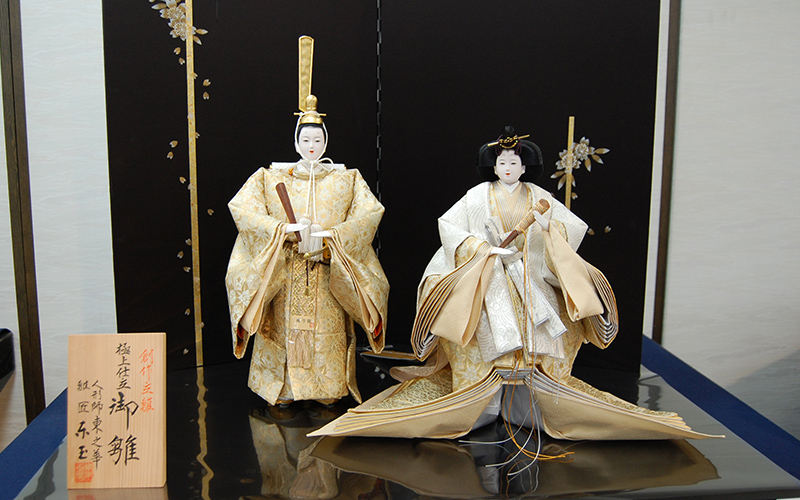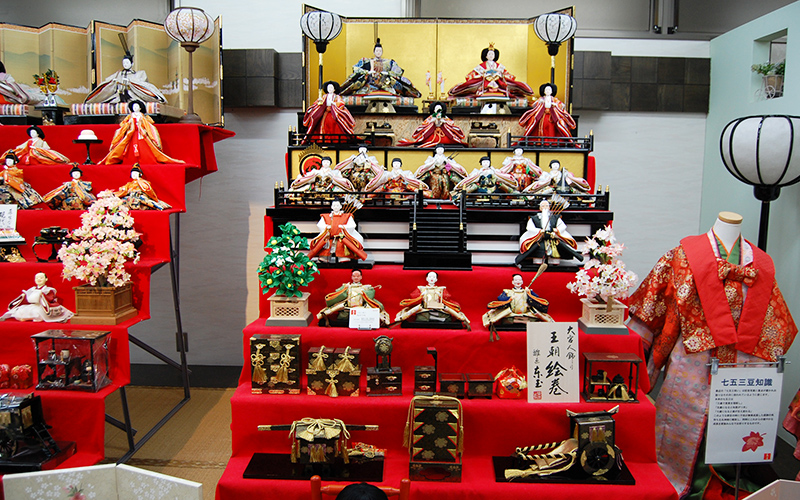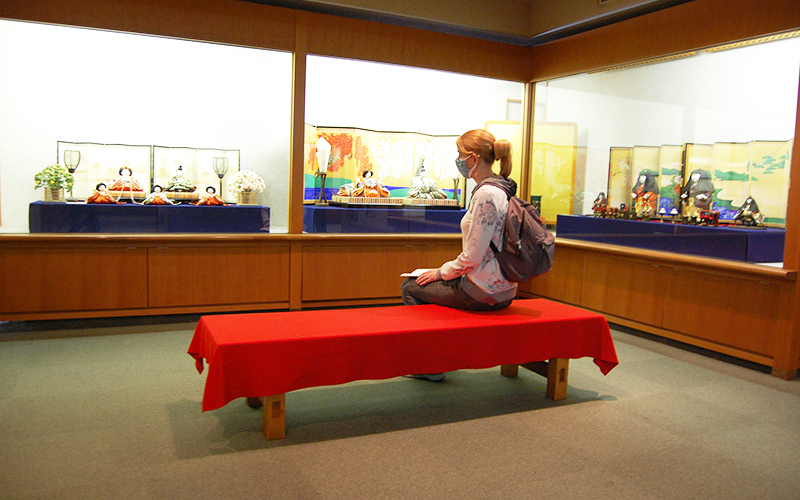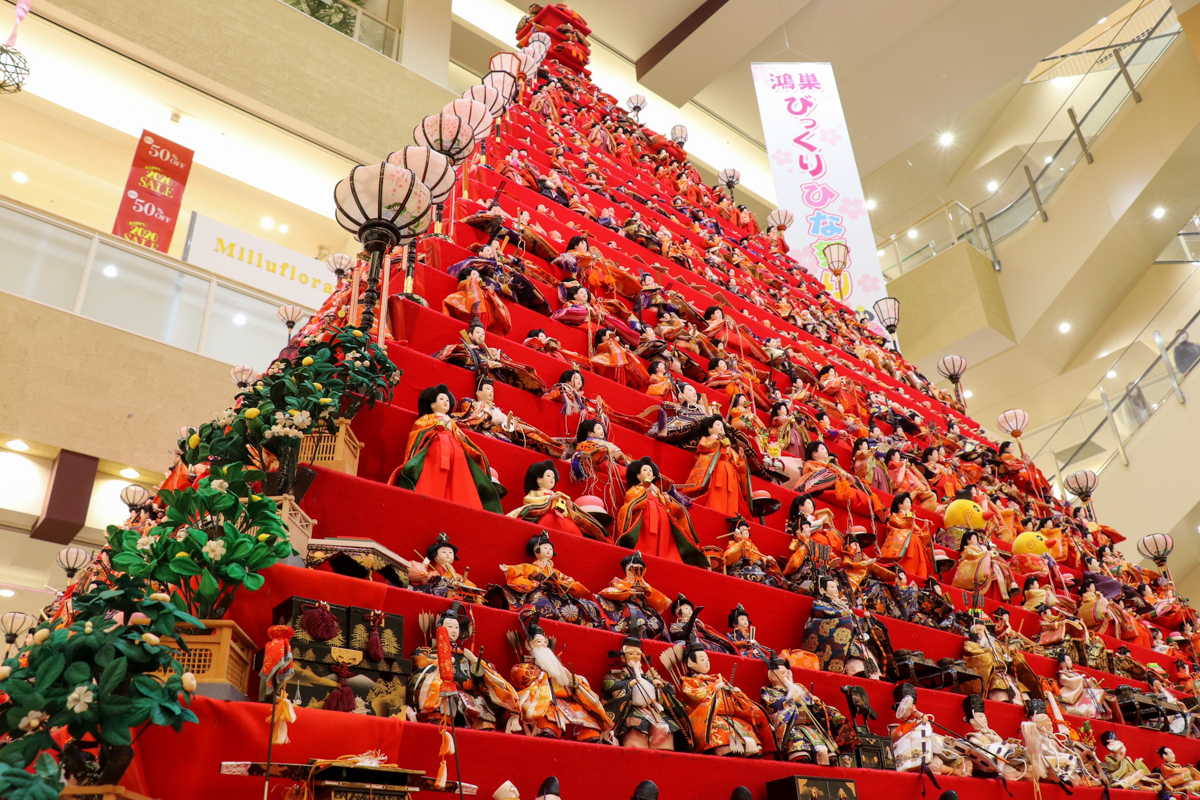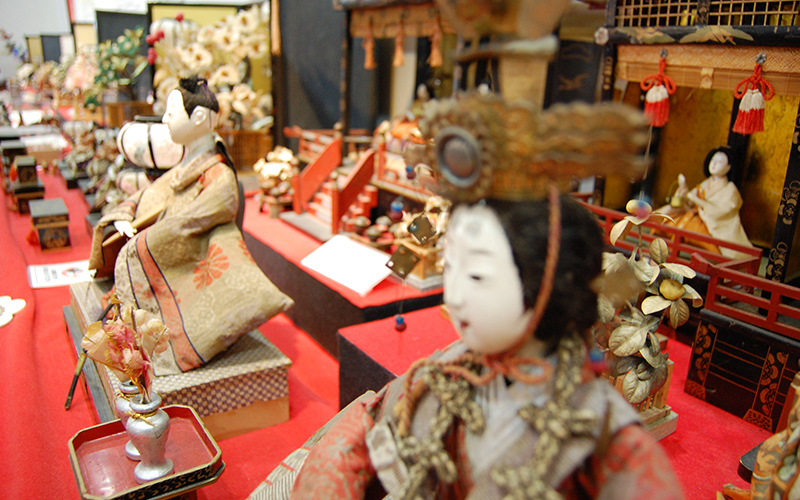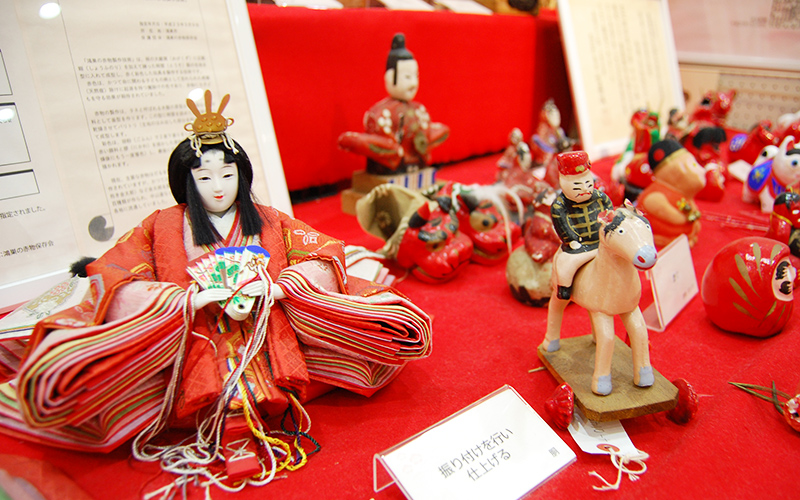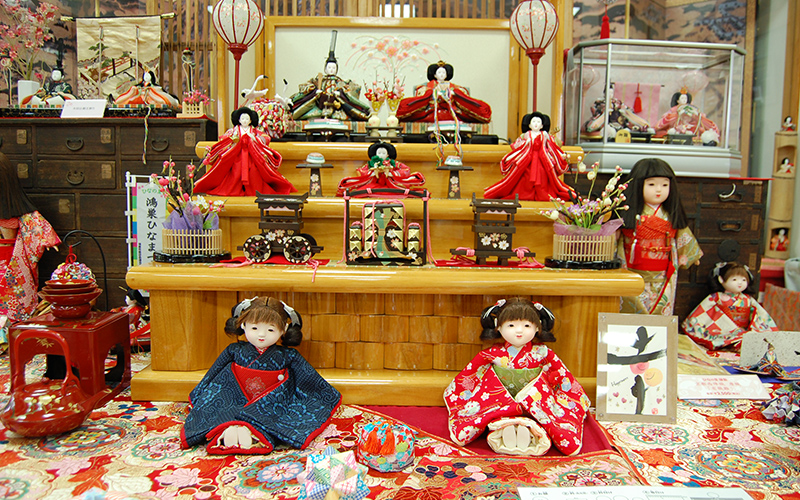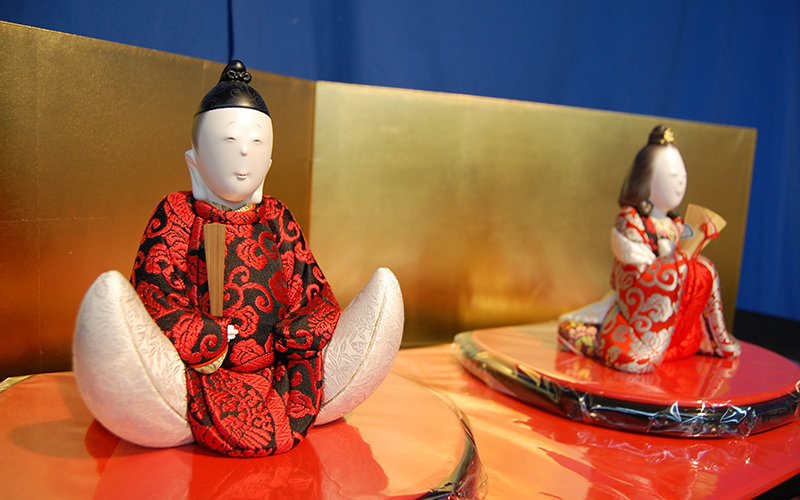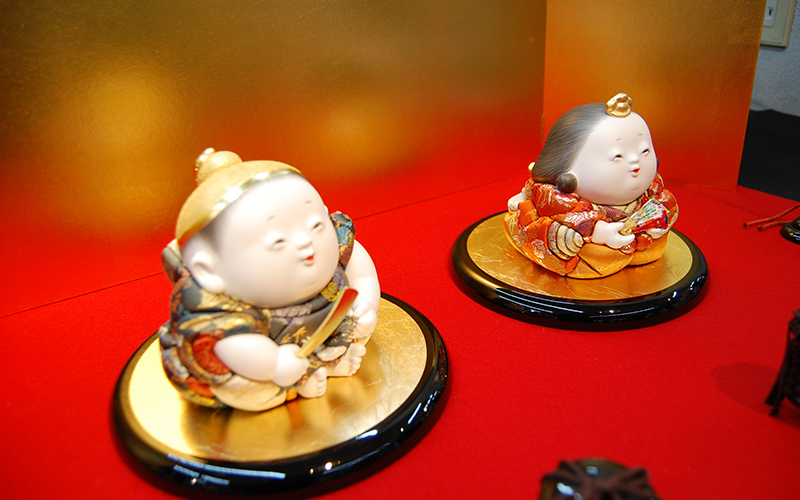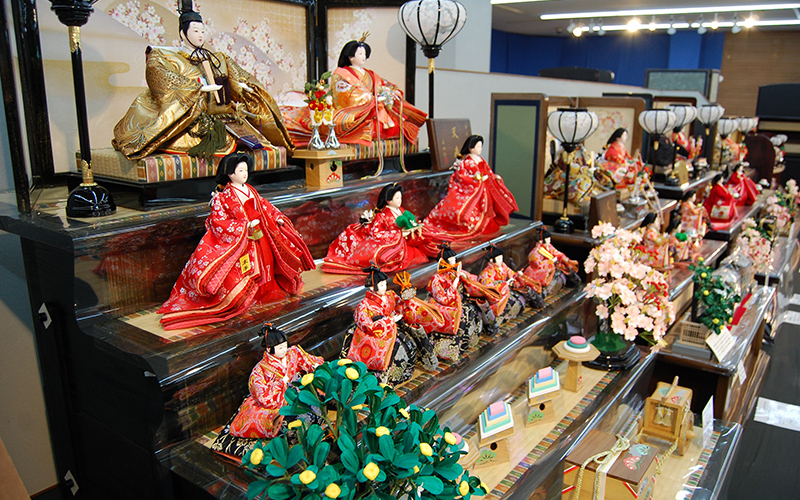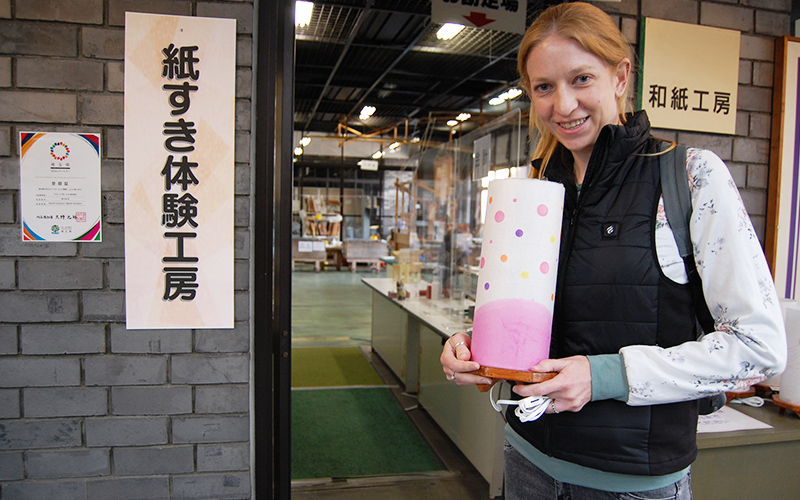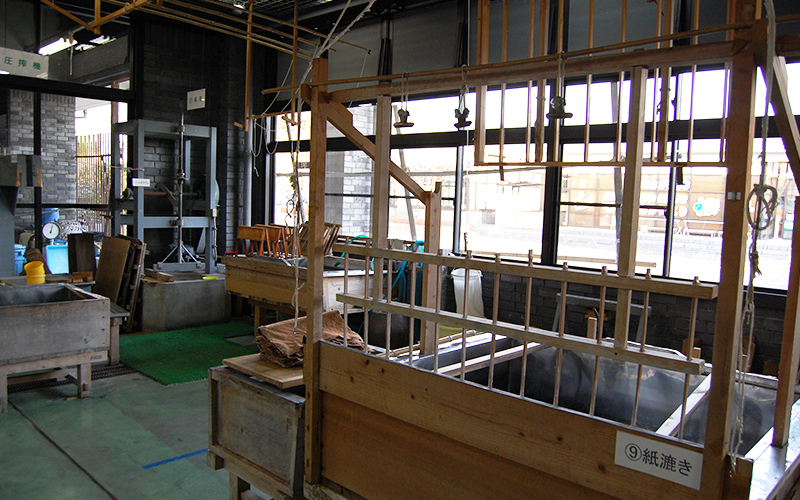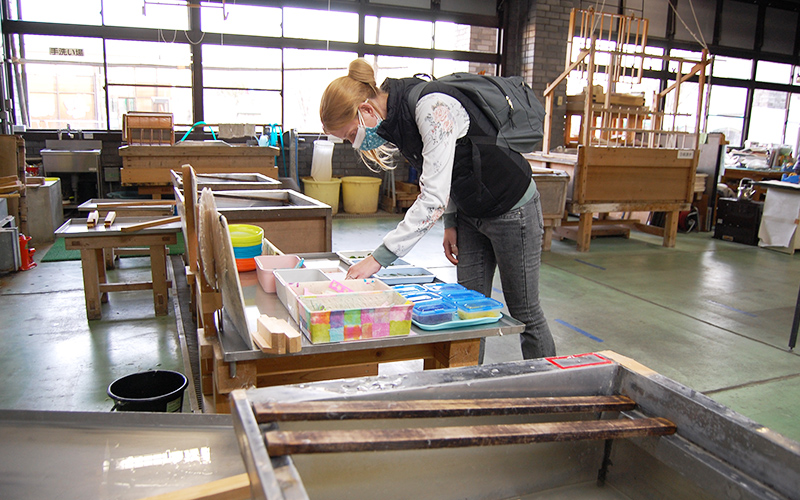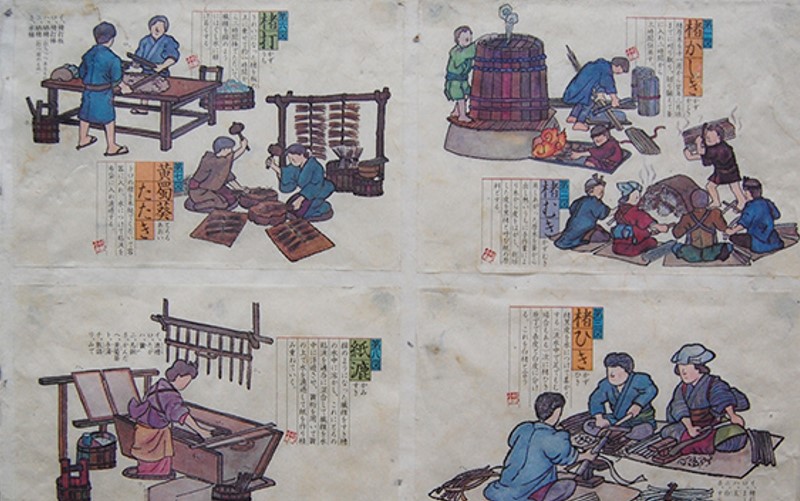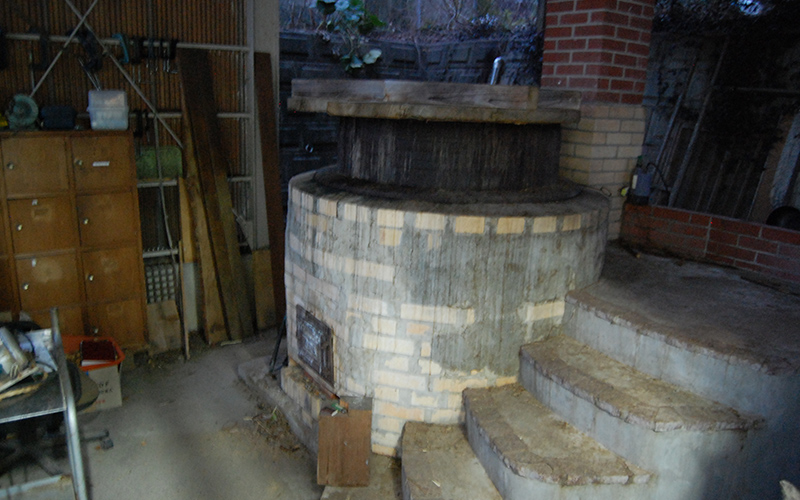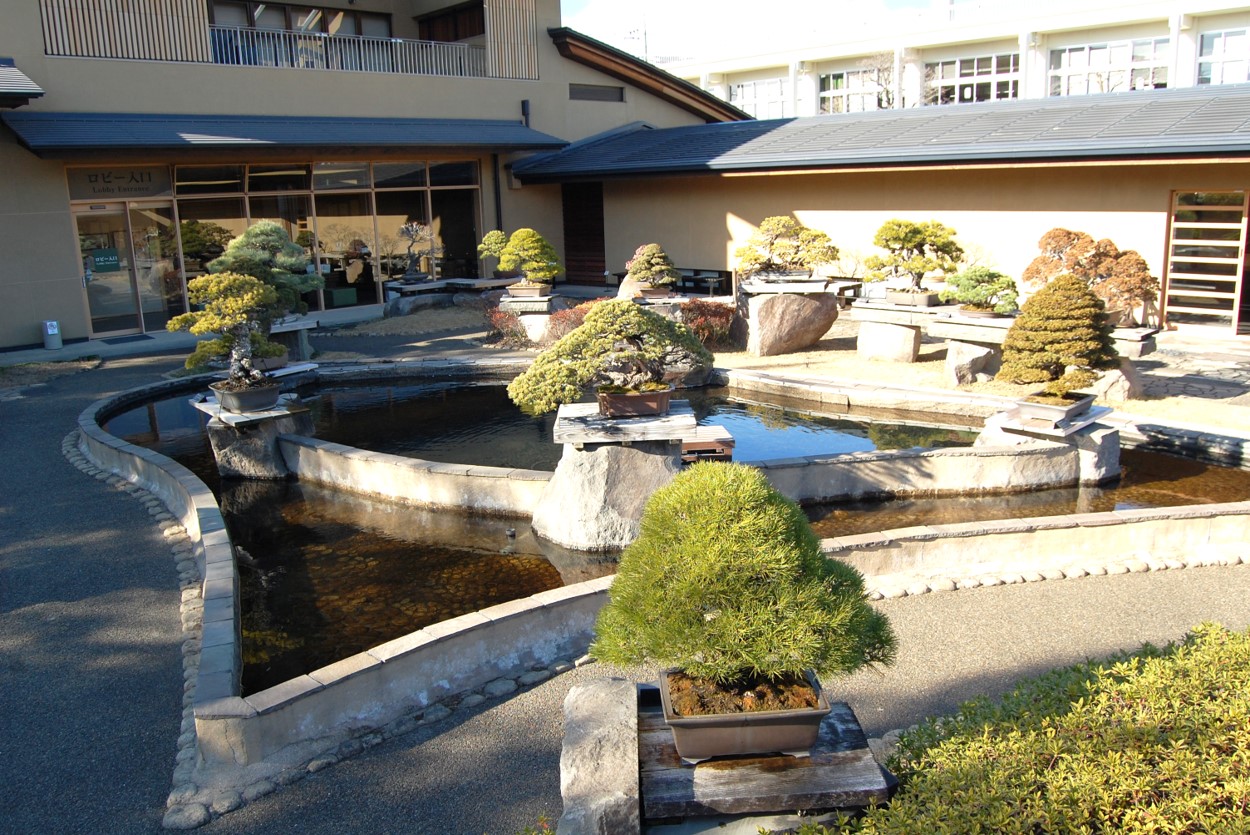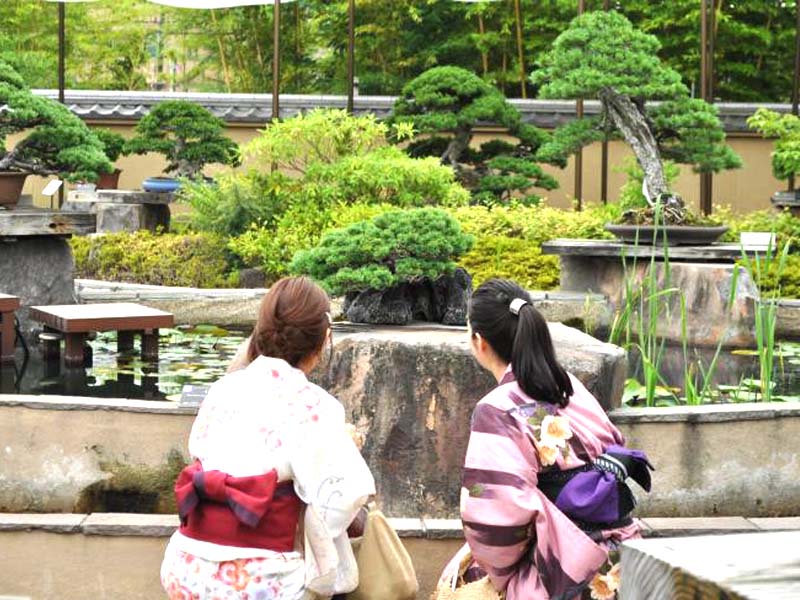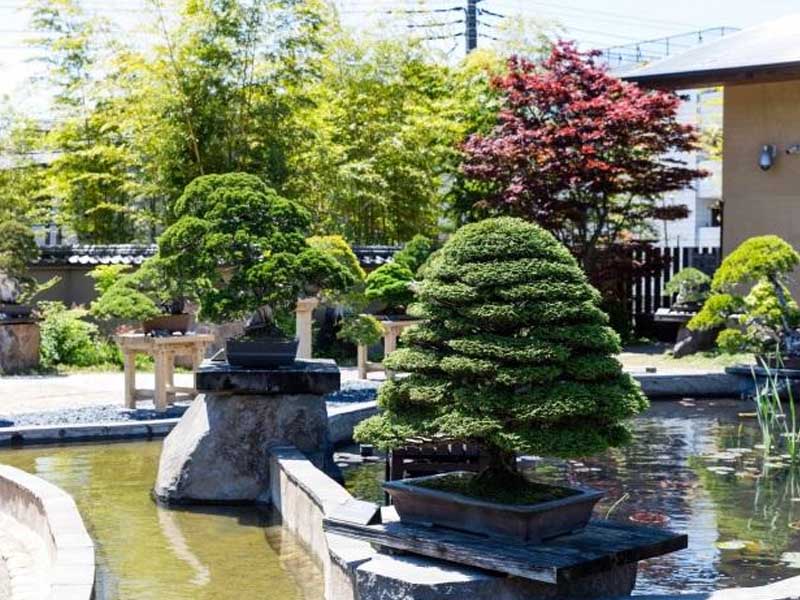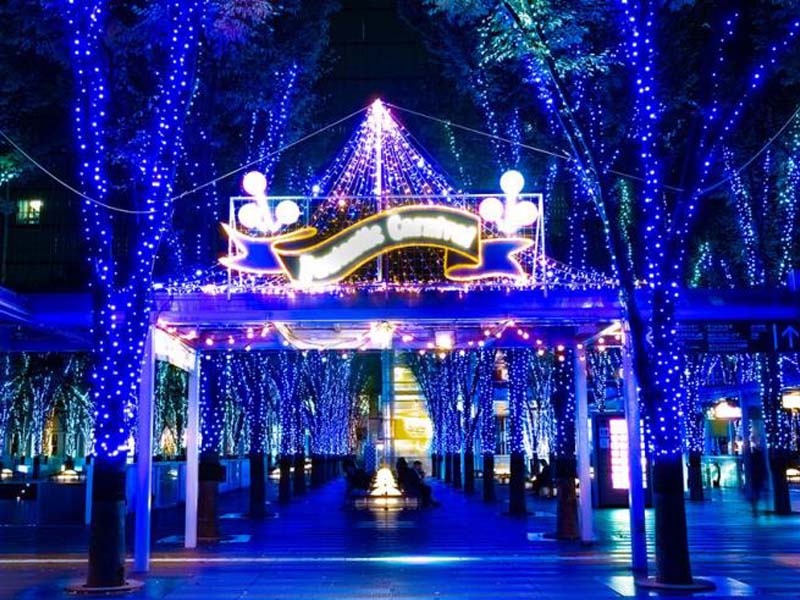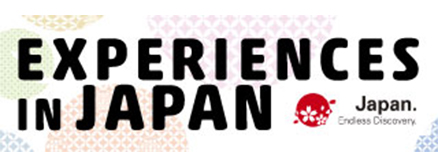Let’s enjoy Japanese traditional crafts and learn about the dolls
Today let’s take a trip just north of Tokyo to Saitama prefecture to see some of Japan’s traditional dolls and even try our hand at making some traditional Japanese crafts!
It is believed the history of dolls in Japan began in the Heian period (794-1185) though the form of the dolls was very different. Dolls were made out of paper or grass and would be rubbed over the body of a new-born baby to remove evil spirits which could bring illness or bad luck to the baby. Then the dolls would be burned or thrown into water to destroy the evil spirits. Over time the dolls evolved and became more and more elaborate.
One of the most popular types of Japanese dolls is the Hina doll which is displayed to celebrate girls’ day on 3 March.Originally, the amulet ritual to remove evil spirits began in the Heian period, then that changed to the Doll’s Festival over time. Between the Meiji period (1868-1912) and the Taisho period (1912-1926) it was popular for families to display a large set of Hina dolls usually consisting of seven tiers with each tier covered in red felt.
Hina dolls are usually dressed in traditional clothing that would have been worn in the Heian period. Nowadays it is more common for families to purchase smaller displays which may consist of only the emperor and empress. You can see some beautiful examples of both large and small displays throughout the cities of Iwatsuki and Konosu in Saitama prefecture.
If you find one that catches your eye you can even purchase it to take home with you!
The Traditional Seven-Tiered Hina Doll Display
The top tier is where the emperor and empress would sit. In some displays they may both be standing or just the emperor may be standing but it is more common to see them both seated.
On the next tier are three court ladies. Usually, the lady in the centre is seated while the other two remain standing. The seated lady is believed to be slightly older than the other two.
On the third tier are five musicians each holding a different instrument (the singer is usually holding a fan). On the fourth tier are two imperial court guards. One is an old man of high rank and the other a young man.
On the fifth tier are three court vassals with very expressive faces. On the sixth and seventh tiers are many miniature items of furniture and other items that would have been included in a bridal trousseau.
There are also examples of celebratory food and plants on various tiers in the display.
Let’s take a tour of Iwatsuki “The city of Dolls”.
Iwatsuki is believed to have become a city of dolls because of its location and the condition of the area. It was a castle town along one of the main highways leading to Toshogu Shrine in Nikko, Tochigi prefecture and many craftsmen who worked on the shrine are said to have moved to Iwatsuki after discovering the paulownia sawdust and water quality of the local area were perfect for the creation of dolls.
As a feature of dolls made in Iwatsuki, the doll’s head is considered to be the most important part so great care is taken to create the most delicate faces. In Iwatsuki, the doll’s head is traditionally made by mixing paulownia sawdust with a special rice glue which is then poured into a mould and allowed to dry. Once dried a white mixture (gofun) made from crushed seashells is blended with glue and water and applied to the dolls head in several layers. Facial features are defined using different tools and then painted. Finally, the hair is added.
Iwatsuki Ningyo Museum (Saitama City)
For our first stop today let’s head over to Iwatsuki Ningyo Museum. This barrier-free museum was opened in 2020 with the aim of sharing the culture of dolls with people from around the world.
Text and audio guides are available in Japanese and English as well as free Wi-Fi so you can view explanations of the exhibitions right from your mobile phone.
There are three exhibition rooms where you can view dolls from various time periods and countries.
In the first exhibition room you can learn about the different stages of production of dolls in Saitama, especially Iwatsuki, and view a number of tools and materials used to create dolls. You can even see the doll’s head at each stage of production.
In the next room there are dolls from a variety of collections such as seasonal (ex. Hina dolls), classical, folk, and international. Be sure to take a good look at some of the dolls made in the Edo period (1603-1868) to see how dolls have changed over time.
Throughout the year they hold lectures and workshops such as making a bag, painting a doll for both children and adults
Don’t forget to take a look at the souvenir shop to find unique gifts for any doll lover.
The museum is located a 10 minute walk from Iwatsuki station and there is also a car park for anyone travelling by car.
<Iwatsuki Ningyo Museum>
Address:6-1-1 Honcho, Iwatsuki-ku, Saitama city, Saitama prefecture
TEL:048-749-0222
Opening hours: 9: 00-17: 00
Closed days: Mondays (open if it is a holiday), Year-end and New Year holidays, Temporary closed days.
Admission fee: General 300 yen, high school / university student / 65 years old and over 150 yen, elementary and junior high school students 100 yen * Group fee available.
TEL: 048-749-0222
Access: 10 minutes walk from Iwatsuki Station on the Tobu Urban Park Line (Noda Line).
URL:https://en.chocotabi-saitama.jp/spot/35204
[Video] Iwatsuki Ningyo Museum “A Day of Dolls in Iwatsuki”
[Video] Iwatsuki doll production “Iwatsuki ningyo (Saitama)”
Nigiwai Koryukan Iwatsuki / Yoroken Caffe(Saitama City)
After wandering around the museum let’s head over to Nigiwai Koryukan Iwatsuki just across the car park. Each month they arrange a number of seasonal crafts you can try making such as dolls (made with paper or fabric), candles, keychains, and wagashi sweets, as well as other events. Places are limited so please ask about reservations if you find something of interest.
Let’s grab a delicious bite to eat at Yoroken Caffe just next door. This relaxing café boasts a menu focusing on European vegetables arranged in a variety of healthy dishes. They offer soup, fresh salads, desserts, drinks, and sandwiches or lunch plates depending on the time.
Try some Sayama tea or Chichibu gelato both produced in the surrounding areas of Saitama.
Before we head off to our next destination take a look at the shop corner selling Iwatsuki Souvenir Brand goods such as Iwatsuki Ningyo-yaki sweets shaped into different symbols (festival dolls, samurai helmet, and more). You can also find a number of traditional handicraft goods such as miniature samurai swords, armour, and fans as well as dolls made with wood covered in cloth.
<Nigiwai Koryukan Iwatsuki>
Address: 6-1-2 Honcho, Iwatsuki-ku, Saitama city, Saitama prefecture
Opening hours: 9: 00-21: 30
Closed days: Year-end and New Year holidays
TEL: 048-757-2981
Access: 10 minutes walk from Iwatsuki Station on the Tobu Urban Park Line (Noda Line).
URL: https://en.chocotabi-saitama.jp/spot/20813
https://www.nigiwai-koryukan.jp
<Yoroken Caffe>
Business hours: Weekdays 10: 00-17: 00 / Saturdays, Sundays, and holidays 10: 00-18: 00
Regular holiday: Open all year round
TEL: 048-720-8512
Togyoku Ningyo Museum (Saitama City)
Another doll museum is in front of Iwatsuki station. The museum is located on the fourth floor of the building directly in front of the station.
Enjoy a short film in English which will give you a lot of information about the dolls made in Iwatsuki before you start your tour. As you walk round the museum you may notice that there are dolls in many different styles as well as displays for five seasonal celebrations (known as Sekku) which you may not have heard of before. Take a moment to learn more about how people in Japan traditionally celebrated the changing of the seasons.
Now that we’ve seen all the dolls at the museum let’s head over the road to visit Togyoku’s studio where we can watch the artisans putting their skills to work. The crafting of a doll is regarded as a division of labour as each stage requires highly specialised skills. Each doll is created by at least four different artisans. One to make the head, one for the body, one for the arms and legs, and one for the accessories. Finally, the wholesaler is responsible for assembling all the parts together.
At Togyoku we have the unique opportunity to see how the dolls are made right before our eyes and get a glimpse of just how much work is put into making each one of these masterpieces.
If you’d like to see some of the beautiful displays of Hina dolls and the decorations to go with them as well as the Gogatsu dolls (to celebrate boys) take a look through the shop. You can also purchase the dolls or decorations. They also have lots of souvenirs and gifts if you’re looking for a special Japanese present for someone.
<Togyoku Ningyo Museum>
Address: Address: Togyoku Building 4F, 3-2 Honcho, Iwatsuki-ku, Saitama city, Saitama prefecture
Opening hours: 10:00-16:30
Closed: Mondays (October 1st to May 5th), Mondays and Tuesdays (May 6th to September 30th)
*Temporary holidays: December 31st, January 1st, January 2nd, May 6th
Admission fee: 100 yen for adults, free for elementary school students and younger
TEL: 048-756-1111
If you have more time to spare and are interested in viewing more or purchasing your own set of Hina dolls here are some more places in nearby Konosu city not to be missed!
Konosu was a post town on the Nakasendo highway and was allowed to hold large markets during the Edo period (1603-1867). It was one of the top three Hina markets in the Kanto region.
The dolls made in Konosu became very popular especially in Edo (modern day Tokyo) and many people would travel to the markets to purchase them.
If you happen to be in Konosu between mid-February and mid-March be sure to visit Bikkuri Hina Matsuri (Surprise Hina Doll Festival), so you can witness the highest pyramid shaped exhibition of Hina dolls in Japan along with other displays throughout the city.
Hina-no-Sato (Konosu City)
Hina-no-Sato is the first place you should visit if you want information about the local area. Please feel free to ask the staff members any questions you might have about Konosu or dolls made in Japan.
In the central exhibition centre you can learn about the history of Konosu city and traditional dolls. You can see the stages of production development of the dolls and the materials used to make them. There are also many lavish displays of dolls ranging from 150 years ago to the present.
Depending on the term of year, hands-on workshops such as painting are also held. (Reservation required)
They have other traditional toys on display as well such as akamono ‘things in red’. These toys were painted red because many people used to believe the colour red could protect from evil spirits.
Next to the main building are “Kura” (warehouses) one of which was built over 120 years ago.
<Hina no Sato>
Address: 1-4-20 Ningyo, Konosu city, Saitama prefecture
Opening hours: 9:00 to 17:00
Closed days: Wednesday (the next day if it is a national holiday), year-end and New Year holidays
TEL: 048-540-3333
Access: 15 minutes walk from JR Konosu Station
Hirotaya (Konosu City)
Just down the road from Hina-no-Sato is Hirotaya, the biggest shop selling traditional dolls in Konosu.
With life-sized dolls in the windows, a bright red bridge outside, and two floors filled with Hina dolls to celebrate girls and samurai displays to celebrate boys this shop is sure to stand out in your memory.
There’s even a large section of souvenirs popular with tourists from overseas.
If you have any questions about the dolls crafted by Hirotaya’s artisans or just want to know a little more about some of the dolls be sure to ask the shop staff as they are very knowledgeable and can share many facts about the dolls. For example, if you look closely at the three court ladies in some displays you may notice that the one in the centre has shaved eyebrows. This little detail is keeping with traditions before the Edo period where married women would shave their eyebrows.
Hirotaya has many traditional sets of dolls and they also have a wide array of unique dolls. They even house a set of dolls from 300 years ago.
Apart from dolls, Hirataya also sells highly decorated battledores which were given to girls after birth to ward off evil spirits and exorcism bows which were given to boys to expel evil spirits.
<Hirotaya>
Address: 1-6-18 Ningyo, Konosu city, Saitama prefecture
Business hours: November-April 9: 00-18: 00 / May-October 9: 00-17: 00
Regular holiday: Closed on Mondays from May to October
TEL: 048-541-8888
Access: 18 minutes walk from JR Konosu Station
Saitama Craft Center (Ogawa Town)
If you are interested in making traditional crafts or just want to experience something unique while visiting Japan be sure to make a stop at the Saitama Craft Center.
Inside the craft center is a washi paper factory where visitors can enjoy making washi paper of various sizes and add freshly picked leaves or tiny pieces of coloured paper to arrange in a style that inspires them. Why not try making something special for someone back home or if you’re travelling with family or friends try making something together as a memento of your trip.
Every month they hold different events where you can try making crafts or watch artisans demonstrating their skills. They often hold special exhibitions to showcase the talents of Japanese artists in various fields so be sure to see what’s on when you visit.
Don’t forget to have a look through the souvenir shop to find beautiful examples of washi paper and local handicrafts.
Next to the building is the Ogawa Michi-no-Eki or roadside station where you can buy locally grown vegetables or just have a look at the different produce grown in Japan.
<Saitama Craft Center> (Reopening in December 2024 (schedule))
Address: 1220 Ogawa, Ogawa town, Hiki direct, Saitama prefecture
Business hours: 9: 30-17: 00 * Admission is until 16:30
Regular holidays: Monday (open if it is a holiday), the day after the holiday (open if it is a Saturday, Sunday, or holiday), year-end and New Year holidays
Access: From “Ogawamachi Station” on JR and Tobu Tojo lines, take a bus to “Traditional Crafts Hall” and walk for 1 minute.
TEL: 0493-72-1220
Tesuki Washi Tanino (Tokigawa town)
If you’re interested in traditional crafts then you should try your hand at making traditional Japanese paper known as washi. It’s believed that washi was first produced in Saitama in the 8th. century.
There are many different types of washi throughout Japan but here you have the opportunity to learn about Hosokawa-shi paper which was designated as an intangible national cultural asset in 1978 and a UNESCO intangible cultural asset in 2014.
At Tesuki Washi Tanino you can see how washi is made from the very beginning of the process.
Washi is made from Kozo (Broussonetia kazinoki x papyrifera) which need to be harvested in the winter when the climate is very dry. The kozo must undergo several different processes (such as steaming, boiling, and bleaching) before it’s able to be turned into washi. You can learn more about the stages on their website or by visiting their shop.
In order to make washi you need to use a wooden strainer to strain kozo fibres which have been mixed with a natural glue and clean water.
Each time you dip the strainer in the mixture the fibres collect to make a thicker sheet of paper.
If it’s your first time making washi there’s no need to fear as a certified artisan will help you until you are confident to try it yourself.
You can enjoy adding flowers or leaves to the paper to make it uniquely yours. If you find that a one-time experience just isn’t enough for you be sure to find out about the internship programme as well.
Each sheet of washi is carefully prepared by hand so no two are ever exactly the same. Try creating your own masterpiece under the supervision of a highly skilled artisan to keep as a treasure from your time in Japan.
< Tesuki Washi Tanino > (Tokigawa Town)
Address: 42-1 Momonoki, Tokigawa town, Hiki direct, Saitama prefecture
TEL: 0493-59-8441
Access: Get off at “Myokaku Station” on the JR line and walk for 15 minutes. Or get off at the bus “Momogi” and walk for 3 minutes.
URL: https://monme.net
While you’re in Japan take a good look at a precious part of Japan’s culture by viewing dolls that have been treasured and passed down from generation to generation.
Take part in a centuries old custom to wish for the health and happiness of girls and boys while you’re in Japan and take a piece of that custom home with you to enjoy with your friends and family.
Try interacting with local artisans and making something truly Japanese for a memory you’ll never forget.
Related article:
Visiting The Saitama City Iwatsuki Ningyo Museum
https://en.chocotabi-saitama.jp/magazine/46
Let’s experience the traditional cultures cultivated in Saitama Prefecture.






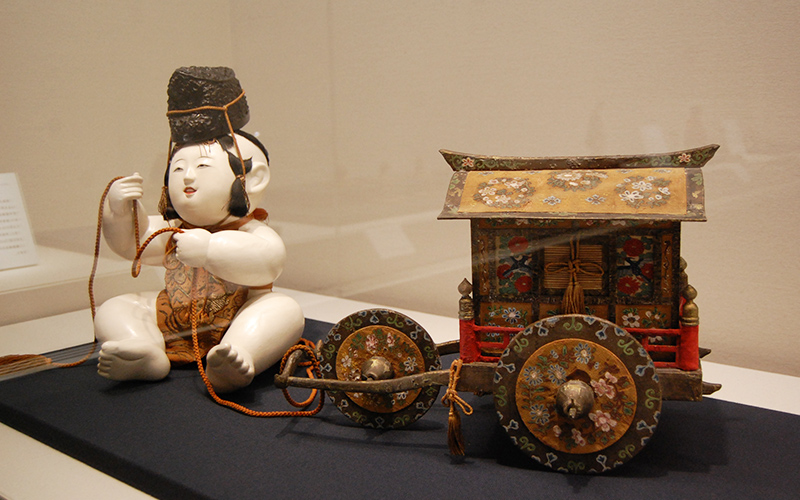


.jpg)

.jpg)
